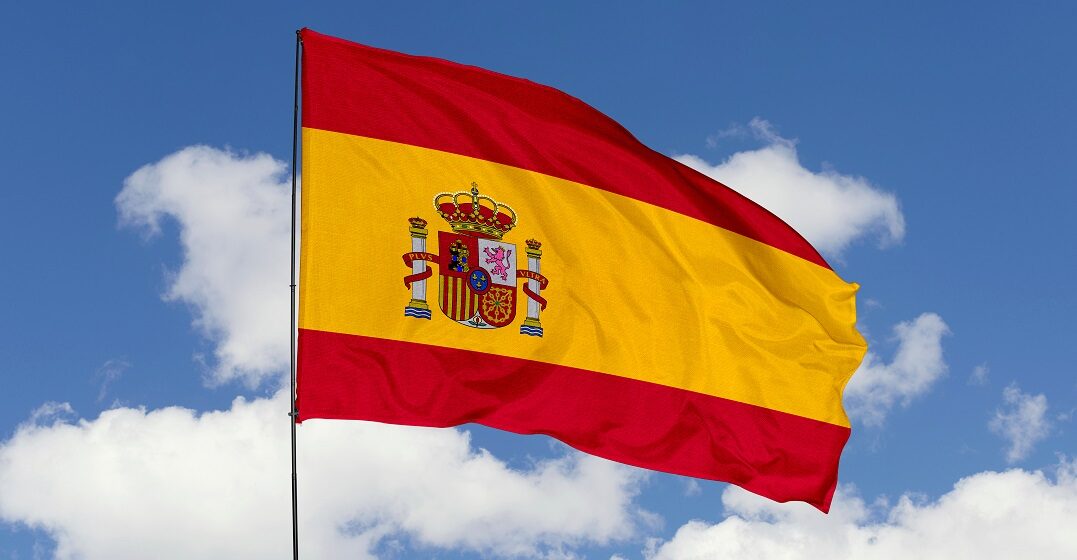Published on October 20, 2023

A brief history of the Spanish language

Like Italian and French, Spanish is a Romance language with roots in Vulgar Latin widely spoken in Roman times. But Spanish evolved differently from its linguistic siblings, due in large part to various foreign invasions and influences — in particular from North Africa.
Various Spanish dialects emerged along the way, with Castilian taking the lead. Things took another turn at the end of the 15th century, with the start of the conquest of Latin America. This spread Castilian Spanish across the world and opened up divergent pathways for it to evolve further.
Today, Spanish is one of the most widely spoken languages in the world. But how, exactly, did it get here? From its origin to its current status, let’s explore the eventful history of Spanish.
From about 200 BC to the third century AD, the Romans occupied the Iberian Peninsula (then known by the Latin term Hispania). They brought their language with them, and Latin eventually became the official language of Hispania.
This was not the Classical Latin spoken and written by scholars in the late Roman Republic. It was Vulgar Latin, the commonly spoken form of the language, that made its way to Hispania and mixed with local languages to influence the development of Spanish.
With the slow decline of the Roman Empire from the first millennium AD, a Germanic tribe known as the Visigoths came in to fill the void. But rather than forcing their own Germanic dialects onto the people of Hispania, they also spoke Vulgar Latin, which continued to morph into what would ultimately become Spanish.
But Spanish was not yet done evolving, and its story took a dramatic new turn with the arrival of another foreign invader.
In 711, the Umayyad Caliphate invaded the Iberian Peninsula from North Africa. In just a few years, the Moorish invaders took over nearly all of what is now Spain and Portugal.
In some regions, their domination was short-lived. For instance, they managed to control Galicia for less than 30 years. However, the south of Spain stayed under Arabic rule for much longer. In the region around Granada, Muslims remained in power for close to 800 years.
To this day, Arabic influences are still visible in Spain’s art and architecture. Arabic has also contributed to the Spanish language. In total, over 4,000 Spanish words have Arabic roots, including barrio (neighborhood), aceituna (olive) and alfombra (carpet). Even the name of the Spanish region of Andalusia comes from the Arabic al-andalus, which refers to the once Muslim-ruled area covering portions of the Iberian Peninsula and southern France.
There was strong resistance against the Arabic presence in Spain, both politically and linguistically. Throughout the nearly eight centuries of Arabic rule, the Reconquista aimed to bring Spain back under the influence of Christendom.
Slowly but surely, various Christian kingdoms expanded their lands, pushing further toward the south of Spain. These kingdoms spoke various Latin dialects, which became the ancestors of the various languages and dialects spoken today in Spain, from Galician to Catalan.
Throughout the Reconquista period, language served as a political weapon to expand power. In the 13th century in Toledo, King Alfonso X of Castile commissioned works on a large variety of topics — law, history and astronomy, to name a few — to be written in his native Castilian. The idea was to promote Castilian and spread its use.
The Reconquista came to an end in 1491 with the handover of Granada, the last Muslim bastion in Spain. Just one year later, in 1492, Castilian became the official language of the country.
Castilian remains Spain’s official language; according to figures from Languageknowledge.eu, it is currently spoken by nearly 94% of the Spanish population. Next comes Catalan, which is spoken by about 16% of the population. Galician is spoken by about 6% of Spanish people and Basque by 1–2%.
Of course, 1492 is also the year when Christopher Columbus first discovered America. This discovery launched the conquest of Latin America, known as the Conquista.
Throughout the 16th and 17th centuries, at the height of the colonization of the so-called “New World,” the Spanish language spread all over the Americas. Mirroring what had happened in Spain, dialects started to emerge and Latin American Spanish evolved away from the Castilian spoken in Spain.
There is, of course, not just one Latin American Spanish. From Mexico to Argentina, different versions developed. In total, there are twelve dialects spoken in South America alone.
These dialects diverge from European Spanish in several significant ways:
In an attempt to establish some consistency and identify these variations, King Philip V of Spain founded the Real Academia Española (Royal Spanish Academy) in 1713. It is today joined by 22 Spanish-language academies spread across the world, which together form the Association of Academies of the Spanish Language.
Though it stemmed from Vulgar Latin along with other modern Romance languages, Spanish has a history all its own.
Arabic rule enriched the Spanish vocabulary but also contributed to the emergence of Spanish dialects in reaction to foreign invaders. Castilian ultimately took the lead and became the official language of Spain, but the story wasn’t over yet. Spanish continued to spread to Latin America, which played host to the creation of even more dialects of the ever-evolving language!